Mat Mii
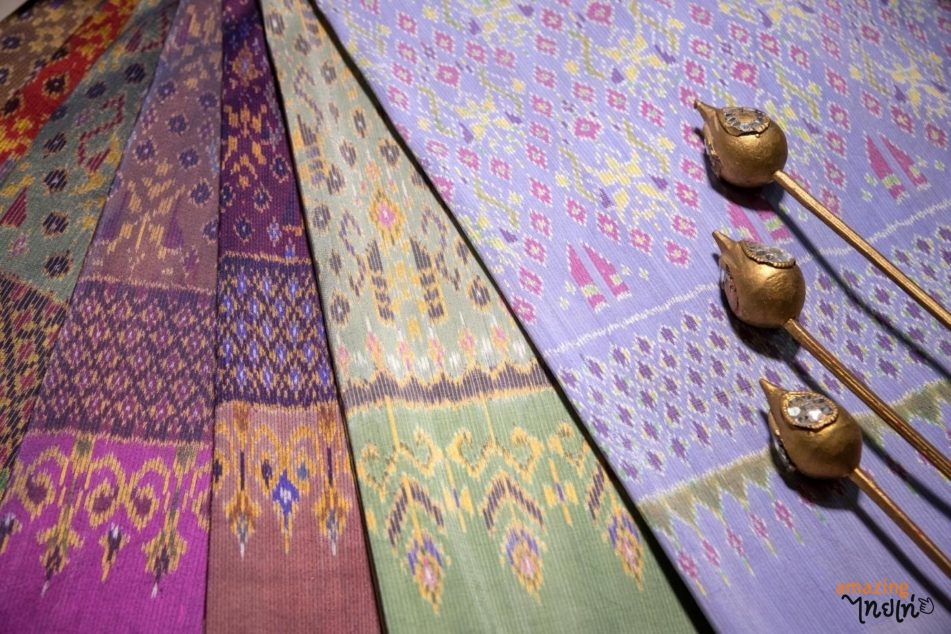
[cr. Tourism Authority of Thailand]
Northeast Thailand is known for silk ikat, or mat mii (มัดหมี่) in Thai, a resist-dyeing process which the patterns that will appear on the finished cloth are dyed onto the weft threads prior to weaving. To do this, enough weft for the entire piece of silk is wound back and forth onto a rectangular frame. Sections are tied off in a predetermined sequence with a material that “resists” the dye – that is, it does not allow the dye to soak through the silk. Strips of banana leaves are the traditional resist material but many weavers now use small strips of plastic instead. The thread is then dyed, the ties removed, and the process is repeated for each desired color.
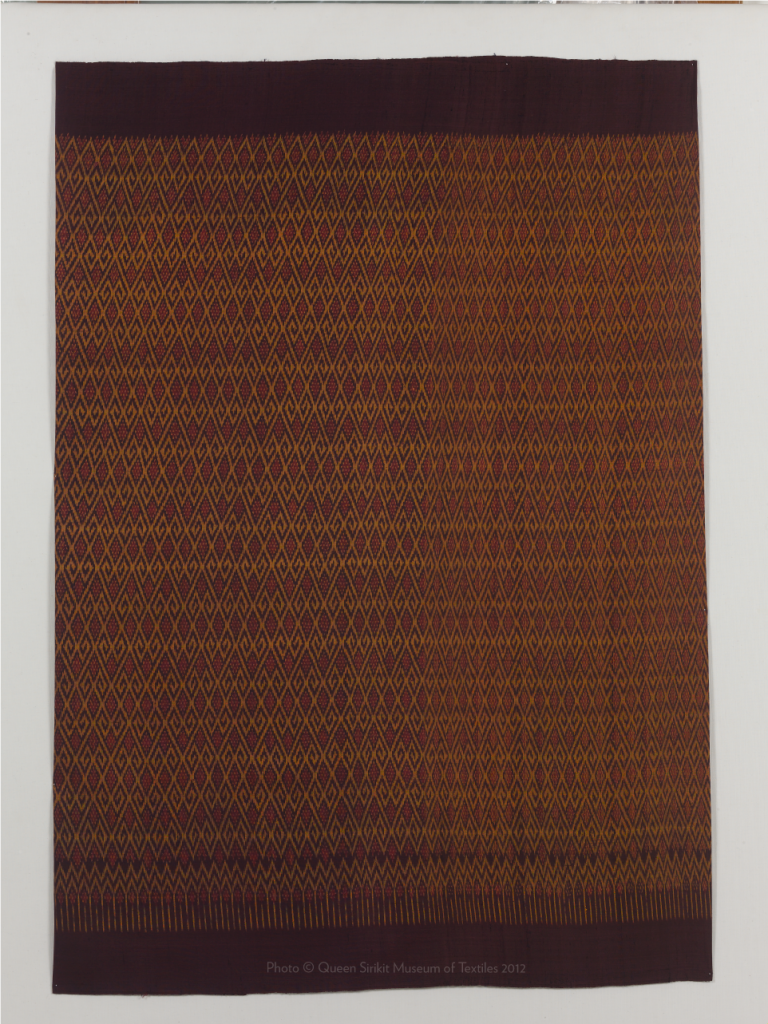
Mat mii cloth [cr. Queen Sirikit Museum of Textiles]
Mat mii weaving is widely practiced among the various ethnic groups of Thailand. The technique is found in almost all provinces of the Northeastern region, also known as Isan. Other sites of mat mii production include Suphan Buri, Ratcha Buri, Sing Buri, and Uthai Thai provinces in the Central region, as well as Nan province in the Northern region. One particularly famous weaving community is located at Na Pho district in Buriram province, Isan region.
Revitalization and Preservation of Na Pho Mat Mii
Na Pho, the northernmost district of Buri Ram province, is famous for its sericulture industry, which dates to the reign of King Rama V (1868 -1910). Modern mass-production had negatively affected the region’s way of life and textile-making traditions, since the time and level of skills required to raise silkworms and process and weave the silk – often several months of labor – made it difficult for villagers to compete with industrially made cloth. As a result, Buri Ram in 1973 was a remote and impoverished area whose inhabitants were dependent solely on farming for subsistence. The region also suffered from a drought for five consecutive years, which brought great distress to the local people. Desperate for drinking water and food, some villagers resorted to bartering their cherished handmade silk cloth for rice from other areas.
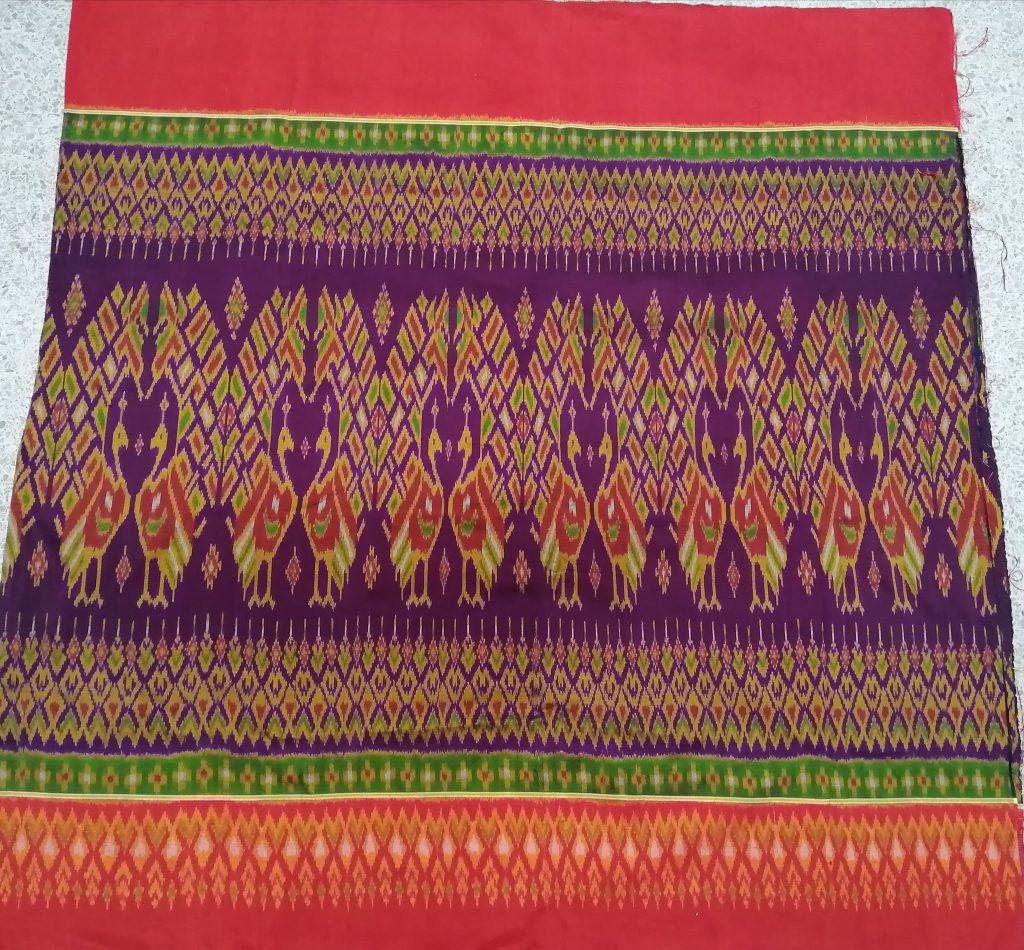
A piece of cloth from Na Pho with peacock patterns [cr. FB:@maaamgan ]
Wishing to offer help that would be effective in the long term, Her Majesty Queen Sirikit the Queen Mother (then Queen Consort) directed Her private secretary, Thanpuying Suprapada Kasemsant, to lead a task force to Buri Ram to investigate the villagers’ problems first-hand and search for traditional silk cloth. In Na Pho, she chanced to encounter Mrs. Prahuap Channuan and a handful of skiled local weavers, whom she persuaded to form a weavers’ group and produce their traditional mat mii for sale. Na Pho later became a center for the SUPPORT Foundation, an organization set up by Her Majesty to help preserve and promulgate traditional crafts as well as provide needed assistance to craft-producing communities across Thailand. The group was so successful that, in 1991, Mrs. Prachuap, was selected to join a team, led by Her Majesty, to promote SUPPORT’s achievement and Thai weaving at exhibitions in the United States.
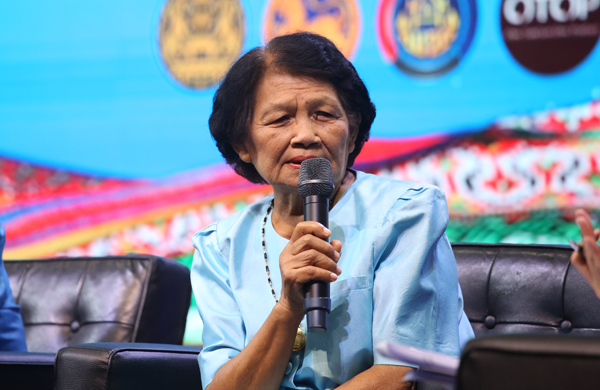
Mrs. Prachuap Channuan [cr. Bangkok Life News]
At present, the Channuan family and several other Na Pho households continue to earn good income from sericulture and weaving. Mrs. Prachuap’s success, in particular, has made her something of an institution. Both Thai and foreign visitors frequently make study visits to her compound. Sangduan Channuan, Mrs. Prachuap’s daughter and second-generation SUPPORT member, has also expanded the scope of the family’s enterprise – designing, weaving, and selling original textiles to retailers. She expressed herself to be forever grateful for Her Majesty’s help and vows to continue her work to preserve Thailand’s endangered textiles traditions.
Tradition Today
Today, usage of mat mii has expanded beyond the scope of traditional clothing. The famed fabric has proven to be a vivacious and versatile fashion material, capable of being adopted to modern clothing and accessories. Several families across Thailand continue to preserve the legacy of mat mii weaving, bringing both income and pride to their respective communities.
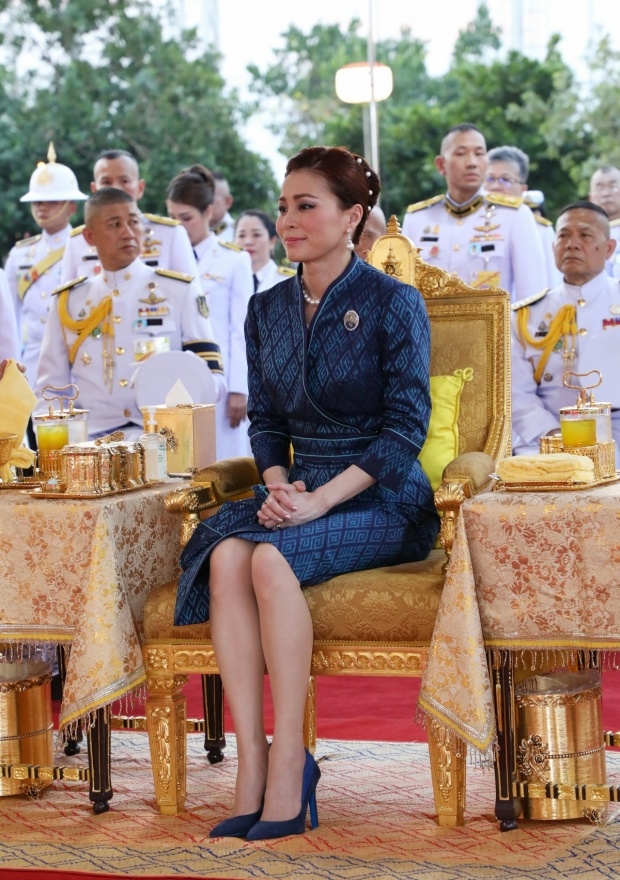
Her Majesty Queen Suthida in a blue mat mii dress [cr.smilesmine.com]
*This article was created with special help from the Queen Sirikit Museum of Textiles
References
- For the Love of Her People Her Majesty Queen Sirikit Creates the SUPPORT Foundation by the Queen Sirikit Museum of Textiles
- Bank of Thailand: https://www.bot.or.th/Thai/MuseumAndLearningCenter/BOTMuseum/Northern/Pages/textile04.aspx


